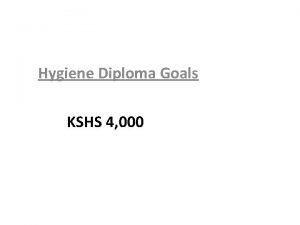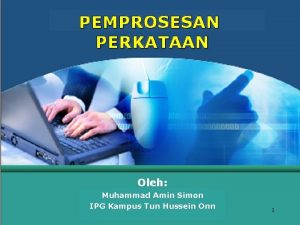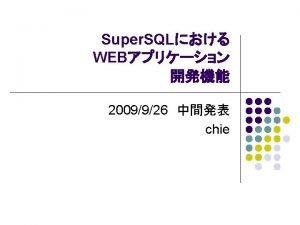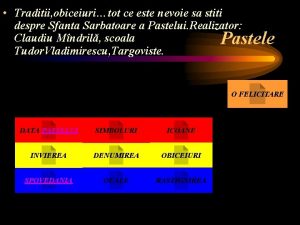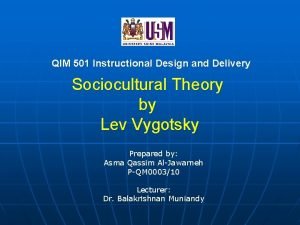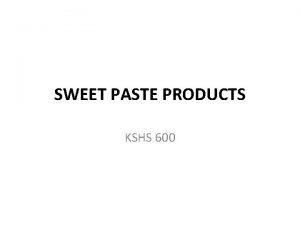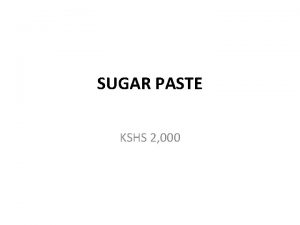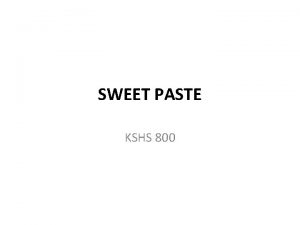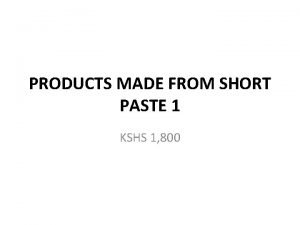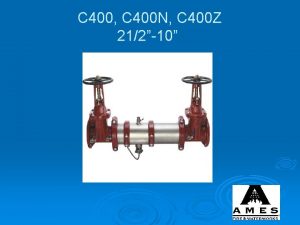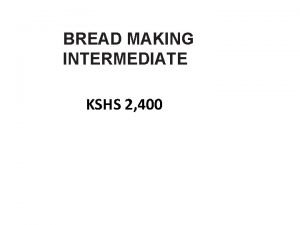SHORT PASTE KSHS 1 400 SHORT PASTE This








- Slides: 8

SHORT PASTE KSHS 1, 400

SHORT PASTE Ø This Chapter covers the competencies required to produce short paste products. It involves objectives, methods of making short paste, products made from short paste. It also has test questions at the end of the chapter. OBJECTIVES; At the end of this chapter the learner will be able to: Ø Describe the various methods used for making short pastry • Rubbing Method • Crumbling Method • Creaming Method • Machine made short paste Ø List down the various products made from short paste Ø Describe the process of manufacture of these short paste products Ø State the correct baking temperatures of short paste products

METHODS OF MAKING SHORT PASTE RECIPE: Ø 3. 5 Kgs - Soft Flour Ø 1. 0 Kg. – cake margarine( or butter) Ø 1. 0 Kg – Shortening Ø 1. 5 litre- cold water Ø 30 gms salt Ø 340 gms – castor sugar Ø Egg Colour

RUBBING – IN METHOD Sieve the flour on the table Rub the fat and margarine finely into the flour Make a Bay Place the remaining ingredients there in and dissolve them Draw in the flour, flake together as lightly as possible and, as soon as it begins to clog, press the paste lightly together Ø Scrape up the table avoiding the use of any but the merest dusting of flour and leave the paste to rest for a period, preferably covered with a slightly moistened cloth or a polythene sheet. With this kind of paste it is a case of the lighter it is handled the shorter it eats. Great care is needed in manipulating the cuttings to avoid unduly toughening them. This paste is suitable for such products as tarts custards Ø Ø Ø

CREAMING METHOD: Ø Sieve the flour on the table Ø Make a bay Ø Break the shortening and Margarine into small portions and place them on top of the flour around the bay. Ø Put the water, the egg colour, the salt and the castor sugar inside the bay and dissolve Ø Pull the flour from the sides into the bay a little at a time and mix Ø Continue to pull flour into the bay as you mix until a soft dough is formed Ø Cream the dough into a soft consistency Ø Do not overmix.

CRUMBLING METHOD Ø Sieve the flour on the table Ø Make a bay Ø Break the shortening and Margarine into small portions and place them on top of the flour around the bay. Ø Put the water, the egg colour, the salt and the castor sugar inside the bay and dissolve Ø Pull all the flour from the sides into the bay at once and crumble with all the ingredients without mixing or creaming Ø A crumbly mass of un-creamed dough results Ø Mix lightly on the table Ø Do not over-mix Ø Scale it off

MACHINE MADE SHORT PASTE The same recipe is used but half the amount of water is reduced. Ø Put all the ingredients into the machine bowl except the water and mix Ø Add half of the water and mix without developing gluten Because of the rough treatment afforded by mechanical action of machine made short paste, the quantity of water is cut. The reduction of water means that in the paste there would less gluten development, the paste would be stiffer and would have shorter eating qualities.

CHEAPER SHORT PASTE Very considerable improvement in short paste making can be achieved, even when it is necessary to use fat very economically. Water is prevented from making direct contact with flour thus preventing to a large extent the d 3 evelopment of the gluten of the flour. Ø Fat and Sugar are creamed very lightly together Ø Water, slightly warmed to 55 degrees Centigrade is added and beaten in much in the same manner as when beating eggs into a cake batter. Ø The flour ( and the baking powder if used) is then added and the paste cleared in the normal manner


